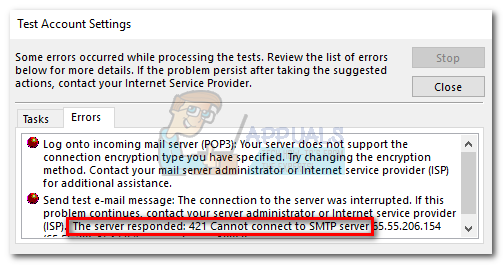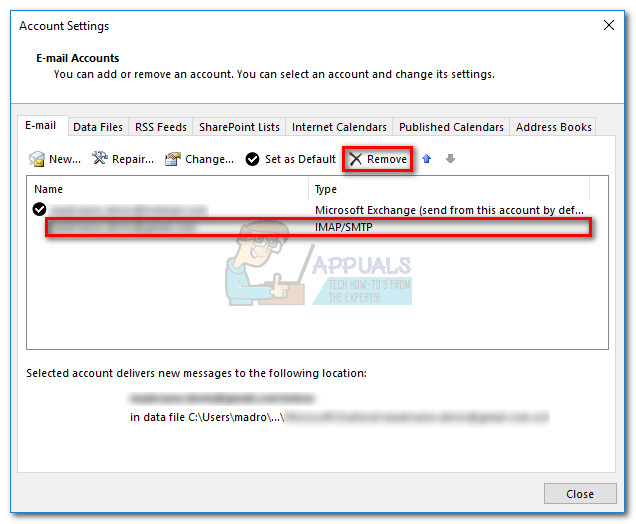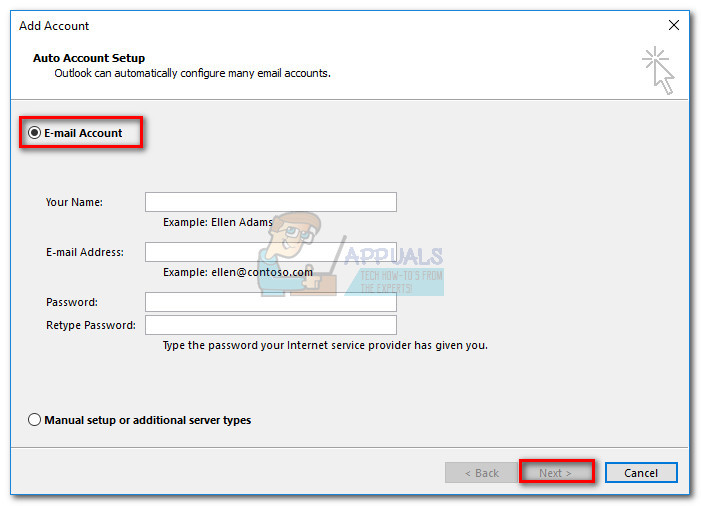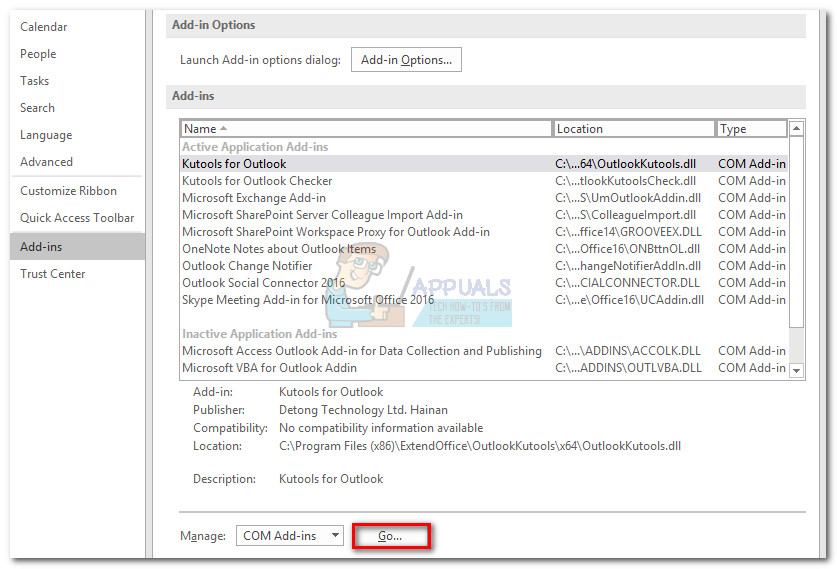Fix: 421 cannot connect to SMTP Server
Some users have reported receiving the “server responded: 421 cannot connect to SMT / SMTP server” error when trying to send an email in Outlook. Often times the error appears due to incorrect settings for the SMTP/ /SMT server, but there are a few other causes that will trigger this Outlook behavior.
The error is a fairly common occurrence with Gmail accounts configured in Outlook.

SMTP / SMT errors encountered in Outlook can be broadly split into the following four categories:
- Outlook Configuration mistakes – The most common reason for the Outlook cannot connect to SMTP / SMT server error is a configuration mistake in Outlook settings. But this is only applicable if the issue appeared with a newly configured email account.
- Firewall-related issues – This behavior is not known to happen with the built-in Windows firewall. However, some 3rd party firewalls and antivirus suites are configured to block connection to some IP ranges, which could include the email server. This could be the underlying cause for receiving the error when sending an email in Outlook.
- Filtered traffic on port 25 – One of the most common practices enforced by ISPs in order to minimize automated spam is to block traffic through port 25. While this is effective in preventing infected PCs from acting as SPAM networks, it also creates a lot of problems for the end user, including the 421 Cannot connect to SMTP server error.
- Interference caused by a VPN connection – Some VPN providers (particularly new products) might not have the email server that you used whitelisted. This is known to trigger the “server responded 421 cannot connect to SMT server” error.
Depending on the cause of the error message, users should make use of the appropriate solution. Below you have a collection of methods that were deployed successfully by users to deal with the”server responded: 421 cannot connect to SMT/ SMTP server” error and send emails normally in Outlook.
Note: Before you troubleshoot with the methods below, make sure your Outlook installation hasn’t become corrupted. To make sure the issue is not being caused by a bad Outlook installation, reinstall your Outlook version and see if the error message is still appearing.
If you only configured the Outlook account, start with Method 1 and troubleshoot for configuration mistakes. If you were previously able to send emails in Outlook, start with Method 2 and work your way down.
In the event that you’re unsure on the cause of the issue, follow each method in order until you encounter a solution that successfully deals with your problem.
Method 1: Resolving Outlook configuration problems
If you recently configured your email account in Outlook, chances are the error is caused by a configuration mistake. Keep in mind that a misspelled mail server name or the wrong port setting will cause Outlook to show the “421 cannot connect to SMT/ SMTP server” error when sending or receiving an email.
If you manually configured your email account settings the first time, let’s try re-adding your account and letting Outlook add the correct settings automatically. Most of the time, Outlook will do a good job of deciding on the correct ports. Here’s a quick guide on adding the correct configuration automatically:
- Let’s start by removing the account before letting Outlook reconfigure the settings automatically. To do this, open Outlook and go to File > Account Settings, select the account in question and click the Remove button.

- When the account is removed, click the New button, select Email account and insert your credentials again. Hit Next and wait for the settings to be configured and the test e-mail message to be sent.

- If the test e-mail is successfully sent, your email account should now be successfully configured.

If you get the same error message when the test email is sent, move down to Method 2.
Method 2: Changing the SMTP port number
If you get the same error message when the test email is being sent in Outlook, it’s very likely that issue is happening because the SMTP port (25) is being filtered by your ISP. Some Internet Service Providers are known to block traffic through Port 25 in an attempt to minimize the spread of automated spam.
Note: This scenario is only applicable if your Outgoing server (SMTP) connection is configured through SSL.
You can verify if that’s the cause of the error by changing the SMTP port number from 25 to 465 and see if the normal functionality resumes. To do this, go to File > Account Settings, select the email account with the problem and hit the Change button.

In the Change Account wizard, go to More Settings and select the Advanced tab. Then, type 465 in the box near Outgoing server (SMTP) and make sure the type of encrypted connection is set to SSL.

If the issue is still not resolved, move down to Method 3.
Method 3: Checking for firewall interference
Firewalls are extra security barriers that protect us against malicious attacks and hacks. But some 3rd party firewall solutions will mistakenly block certain IP ranges based on a number activity patterns. With a bit of bad luck, the email server IP might end up on that list, which will translate into a “server responded 421 cannot connect to SMT server” error. Avast anti-virus is known to produce conflicts with Outlook.
You can test for this scenario by disabling your 3rd party firewall/ antivirus suite and sending a test email through Outlook. If the email is sent successfully, start looking through your antivirus settings and see whether you can add the email server to the Exclusion list. The location of the Exclusion list is highly dependent on your 3rd party antivirus.
Note: If you use Outlook add-ins, you might also want to take a look at which add-ins you currently have active. Go to File > Options > Add-Ins and see whether you have any antivirus plug-in that might prevent the connection to the server from happening. If you see an antivirus plug-in (such as Avast! Add-in), click the Go button near Manage COM Add-ins and uncheck the box next to the plugin. This should prevent the antivirus plugin from interfering with the server connection.

Method 4: Checking for VPN interference
If you’re using a VPN solution to secure your web traffic and stay anonymous while browsing online, you might want to check if that’s the cause of the issue. Some users have reported discovering that their VPN connection was preventing Outlook from communicating with the email server.
You can easily check if that’s the case by disabling your VPN network connection and sending an email through Outlook. If the email is sent successfully while the VPN network is disabled, you have two potential ways forward – You can either contact the VPN network support and ask to whitelist the email server or look for a different VPN provider altogether.